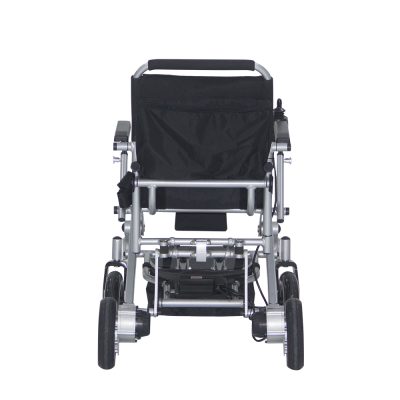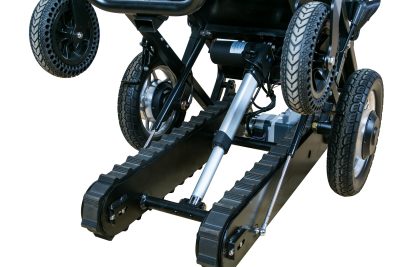Introduction Manual wheelchairs usually consist of pushers, wheelchair frames, wheels, brakes, anti-reverse devices, seats and pedals.
Small wheels: diameters of 12 cm, 15 cm, 18 cm and 20 cm. Small wheels with larger diameters can easily overcome small obstacles and special carpets. However, if the diameter is too large, the entire wheelchair will take up more space and it will be inconvenient to move. The normal small wheels are in front of the big wheels, but in paraplegic wheelchairs, the small wheels are usually placed behind the big wheels. It should be noted that the direction of the small wheel can be perpendicular to the large wheel, otherwise it is easy to fall.
Big wheels: carry the main weight. The wheel diameters are 51, 56, 61 and 66 cm. In addition to a few solid tires required by the operating environment, pneumatic tires are also widely used.
Hand wheel rim: owned by small manual wheelchairs, the diameter is generally 5cm smaller than the large wheel rim. When hemiplegia is driven with one hand, add a smaller diameter for selection. The hand wheel rim is generally pushed directly by the patient. If the function is not good, it can be modified in the following ways for easy driving:
Add rubber on the surface of the hand wheel to increase the grinding force. Increase the push knob (knob) around the circumference of the hand wheel.
There are the following types of push handles:
Push the handle horizontally. Used for C5 spinal injury. Therefore, the biceps muscles are sound, and the hand is placed on the push handle, and the cart can move forward by flexing the elbow. If there is no horizontal push handle, it cannot be pushed.
Push the handle vertically. For rheumatoid arthritis when the movement of the shoulder and hand joints is limited. Therefore, the horizontal push handle cannot be used.
Bold push handle. It is used for patients with severely restricted finger movement and difficult to make a fist. It is also suitable for patients with osteoarthritis, heart disease or elderly patients.
Tires: There are three types: solid, inflatable inner tube and tubeless inflatable. The solid type walks faster on flat ground and is not easy to blast and is easy to push, but it vibrates greatly on uneven roads and is not easy to pull out when stuck in a groove the same width as the tire; with a pneumatic inner tube, it is more difficult to push and easy to puncture, but Vibration is smaller than that of a solid type; the tubeless inflatable type will not puncture because of the tubeless tube, and the interior is also inflated and comfortable to sit up, but it is more difficult to push than the solid type.















